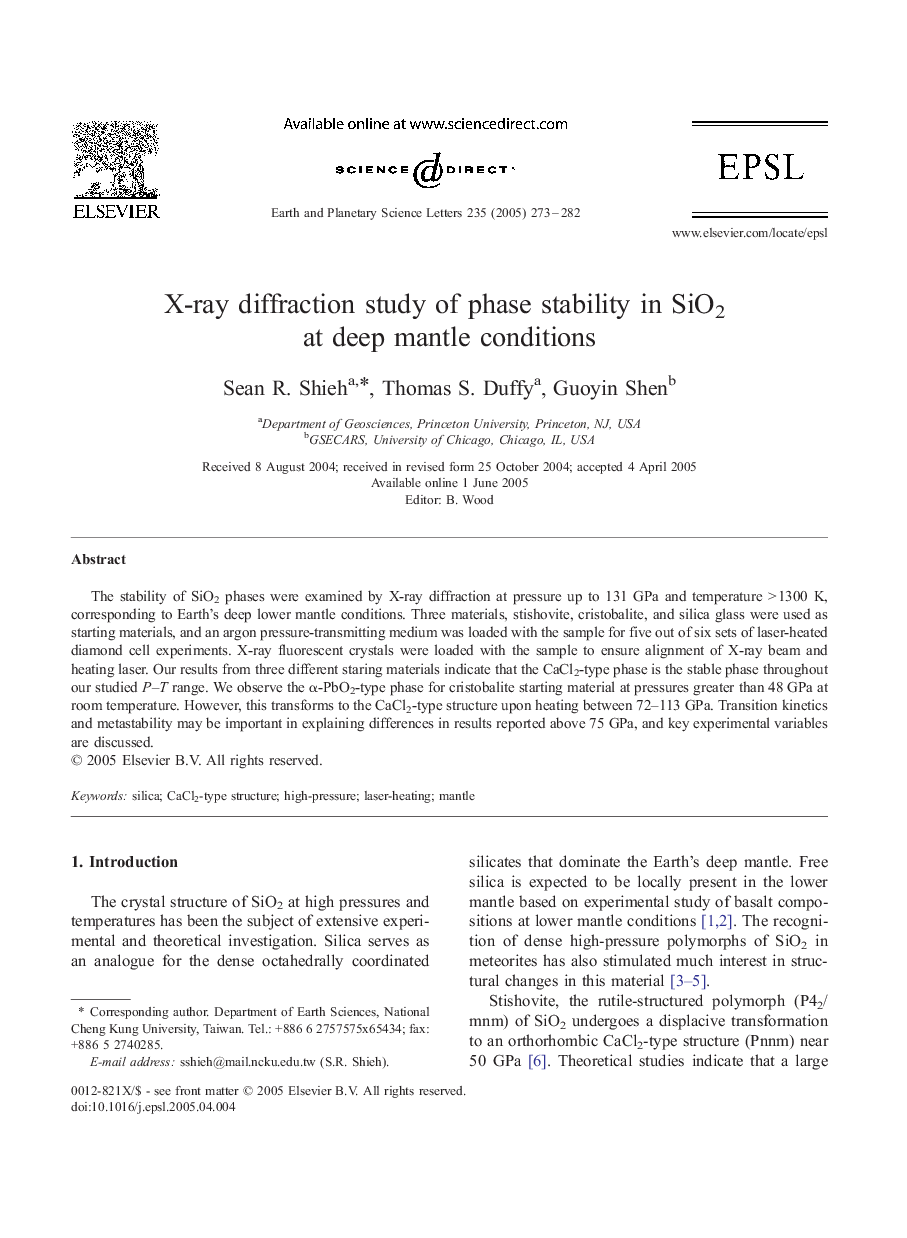| Article ID | Journal | Published Year | Pages | File Type |
|---|---|---|---|---|
| 9522327 | Earth and Planetary Science Letters | 2005 | 10 Pages |
Abstract
The stability of SiO2 phases were examined by X-ray diffraction at pressure up to 131 GPa and temperature > 1300 K, corresponding to Earth's deep lower mantle conditions. Three materials, stishovite, cristobalite, and silica glass were used as starting materials, and an argon pressure-transmitting medium was loaded with the sample for five out of six sets of laser-heated diamond cell experiments. X-ray fluorescent crystals were loaded with the sample to ensure alignment of X-ray beam and heating laser. Our results from three different staring materials indicate that the CaCl2-type phase is the stable phase throughout our studied P-T range. We observe the α-PbO2-type phase for cristobalite starting material at pressures greater than 48 GPa at room temperature. However, this transforms to the CaCl2-type structure upon heating between 72-113 GPa. Transition kinetics and metastability may be important in explaining differences in results reported above 75 GPa, and key experimental variables are discussed.
Related Topics
Physical Sciences and Engineering
Earth and Planetary Sciences
Earth and Planetary Sciences (General)
Authors
Sean R. Shieh, Thomas S. Duffy, Guoyin Shen,
